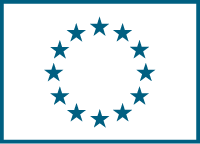Bose-Einstein Condensation of Ground State Molecules
(M-BEC)
Date du début: 1 mars 2008,
Date de fin: 28 févr. 2010
PROJET
TERMINÉ
"The aim of this project is to create a Bose-Einstein Condensate (BEC) of ro-vibrational ground state molecules. A BEC of molecules in the ro-vibrational ground state can be used as a “molecular matter wave laser”. It will serve as an ideal starting point for the investigation of collisional processes in the zero-temperature limit and for the study of fully coherent chemical processes. It will be a bright and extremely narrow-band source for precision molecular spectroscopy, and it will provide a testing ground for elaborate strategies to form condensates of more complex molecular systems. This project is intended to bridge the boundaries between atomic, molecular and condensed matter physics with strong linking to the newly emerging field of ultracold chemistry. The project proposes a specific route to produce a BEC of ro-vibrational ν=0 and J=0 ground state Cs2 dimer molecules by taking weakly bound molecules associated on a Feshbach resonance and transferring them to the ro-vibrational ground state of the singlet molecular potential using two stages of optical two-photon transfer. For this an optically trapped BEC of Cs atoms is first loaded into an optical lattice to form a Mott insulator state with precisely two atoms per lattice site. Weakly bound dimer molecules are then formed out of the atomic Mott insulator state by means of the Feshbach association technique. Confinement at each lattice site shields the molecules from inelastic collisions until they are transferred to the ground state. Optical transfer is achieved by the STIRAP technique using phase-locked diode lasers referenced to a frequency comb. Two successive stages of STIRAP are need to bridge the internuclear distance and to remove a binding energy corresponding to about 3650 wavenumbers. After the transfer, the molecules are released from the lattice into the initial larger volume optical trap. The ensemble of ground state molecules will then form the state of a molecular BEC."
Accédez au prémier réseau pour la cooperation européenne
Se connecter
ou
Créer un compte
Pour accéder à toutes les informations disponibles
Coordinateur
- Hanns-Christoph Nägerl
- INNRAIN 52 6020 INNSBRUCK (Austria)
Details
- 100% € 160 749,69
-
 FP7-PEOPLE
FP7-PEOPLE
- Projet sur CORDIS platform



